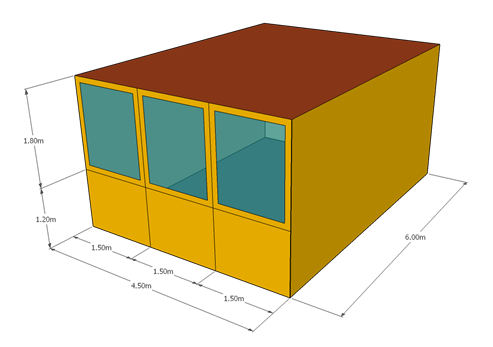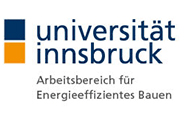Hi,
we work at the University of Innsbruck and we are doing a comparison work between the simulation results of different simulation tools (TRNSYS, carnot/Simulink, Energy+) for an office building.
Below the sketch of the office building model (floor area of 27 m2 and volume of 81 m3). The office is located in STOCKHOLM and just the wall oriented to the South (surface
“1” in the sketch) can transmit heat, while all the others five surfaces were modelled as adiabatic (BOUNDARY/identical in TRNSYS). The reference glazing assembly
WIN-ID 2206 is used for the window on the surface “1”. A simulation of 1 year was performed assuming a set point temperature of 21 °C and 25 °C for winter and summer, respectively.
![]()

The Table below shows the annual comparison for the three tools investigated. We are trying to understand why there is this relevant deviation in the calculation of the transmission losses (in
the table the total transmission losses are reported, i.e. WALL+WINDOW) between TRNSYS and the others two tools. We also founded out that this deviation is due to the difference in the transmission losses of the window calculated in the three tools, while
the transmission losses just of the opaque structure are comparable in the three tools. We are trying to understand this aspect. Why the transmission losses of the window are much higher in TRNSYS compared to the others tools? Could it be due to the glazing
assembly used or maybe TRNSYS is able to take into account some phenomenon that the others two tools do not consider?
Did you have some experience to share with us?
|
Heating |
Cooling |
Infiltr. |
Ventil. |
Transm. |
Int. gains |
Solar gains |
|
|
[kWh/(m2y)] |
|||||||
|
carnot/Simulink |
13.80 |
-31.07 |
-21.14 |
-32.33 |
-41.95 |
56.52 |
56.18 |
|
Trnsys |
21.32 |
-23.79 |
-20.02 |
-30.43 |
-61.62 |
56.52 |
58.04 |
|
Energy+ |
16.78 |
-32.69 |
-21.31 |
-29.12 |
-37.17 |
57.48 |
46.03 |
Thanks in advance for your time and availability.
Mara Magni
Toni Calabrese
Fabian Ochs

Toni Calabrese
Wissenschaftlicher Mitarbeiter
AB Energieeffizientes Bauen
Institut für Konstruktion und Materialwissenschaften
Universität Innsbruck
Technikerstrasse 13, 5.Stock, Raum 510
A-6020 Innsbruck
Tel: +43 67761597355
mailto:
Toni.Calabrese@uibk.ac.at
http://www.uibk.ac.at/bauphysik/